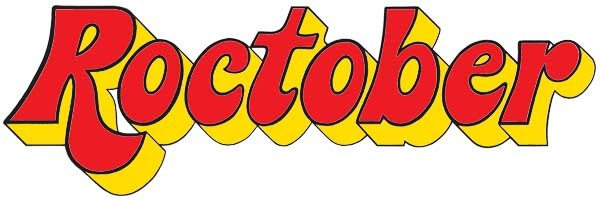(Guest Review by Madeline Bocaro)
Charlie
Chaplin, the comic icon who deeply touched our hearts is always remembered with
a smile. His silence was truly golden - words could not express the depth of
pain in the little lost soul whom he portrayed effortlessly in his films -
because he was playing himself. This man was so much more than a flickering
monochrome image of a funny, charming poor little tramp. Chaplin was staging
his own reality. His comedy was based on tragedy, and his artistry is timeless.
The
rags-to-riches life of Chaplin seems too sad to be made into a Broadway musical. Abandoned by his alcoholic dad, a mother whom he
loved dearly gone insane, three gold-digging wives and ruination of his career
by a gossip columnist overwhelmed Chaplin’s incredible life. His on-screen alter-ego,
the Little Tramp evolved into a Pierrot figure, reflecting his own feelings of dejection.
Under
stark white lighting, spectacular Art Deco period props and costumes in black
and white, glittering silver and gray took us back in time to the glamorous
Hollywood world of the early 1900s - the birth of ‘flicker films’ before sound
and color. Use of floor-to-ceiling vintage film clips and Chaplinesque movies
as scenery evoked the era quite well. But it was Rob McClure’s superb
acrobatics, a fine salute to Chaplin’s own natural bumbling ballet, which
propelled the entire production. Tightrope walking, juggling his hat and cane,
tap dancing on roller skates and clumsy slapstick antics drive the story and
bring to life the brilliant yet self-effacing Chaplin in his mismatched too big
/ too small clothing.
Amidst
whirlwinds of dance by the entire troupe, the performance slows down and echoes
back several times to the small boy, Charlie calling for his mother as she is
being taken away to an asylum - the crux of Chaplin’s lifelong pain. His
supportive brother/manager is his only ally, sharing in the agony of their
mother’s illness. Success comes fast, wives come and go, and the horrible Hedda
Hopper - the best singer in the cast - is relentless in bringing him down.
After Chaplin makes The Great Dictator film mocking Hitler and begins to
speak out for humanity, Hopper has him branded as a Communist. Despite the
British born Chaplin’s fondness for America, he remains in exile in Switzerland
with the love of his life, Oona O’Neill.
At the
dawn of talking pictures, Chaplin fears that he will be lost in time. In the
final scene, he receives an honorary Oscar in 1972. (The standing ovation he
received was the longest in history.) The red carpet of the awards ceremony is
the first burst of color we see all evening. Although surprised at his
notoriety after so many years, the aged Chaplin’s brief return to Hollywood was
bittersweet.
As Rob McClure waddled off stage for
the last time in Chaplin’s oversized shoes, (he actually walked into the movie
screen and morphed into his own film animation!) it felt like we had a true
glimpse into the heart of this humble, passionate icon who will never be
forgotten. (page 1 of 2)
I wonder
why the classic Chaplin-penned song ‘Smile’ was not used in the performance, as
it sums up his philosophy so beautifully.
Smile though your heart is aching
Smile even though it's breaking
When there are clouds in the sky
you'll get by
If you smile through your pain and sorrow
Smile and maybe tomorrow
You'll see the sun come shining through
For you.
Light up your face with gladness,
Hide every trace of sadness
Although a tear may be ever so near
That's the time you must keep on trying
Smile, what's the use of crying
You'll find that life is still worthwhile
If you just smile
1972 Oscars Ceremony
The Great Dictator – speech
Chaplin Trivia:
I once
stood in Chaplin’s footsteps in the cement at the doorway of his Tudor style
Hollywood studio built in 1917, once surrounded by orange groves. Most of his
films were made here. Many pop records were recorded there when it became
A&M studios. The expansive Jim Henson building (since bought by Disney)
still has a statue of Kermit dressed as Charlie on its roof. In
1969, it was designated as a Los Angeles
Historic-Cultural Monument.
Chaplin’s
mother Hannah was institutionalized at Cane Hill Mental Hospital in Croydon.
Cane Hill was also home to David Bowie’s half brother Terry Burns, and to actor
Michael Caine’s step brother.
Stan
Laurel (of Laurel & Hardy) sometimes acted as Chaplin’s understudy at the
British Music Hall. Chaplin and Stan Laurel arrived in America on the same boat
from England.



No comments:
Post a Comment